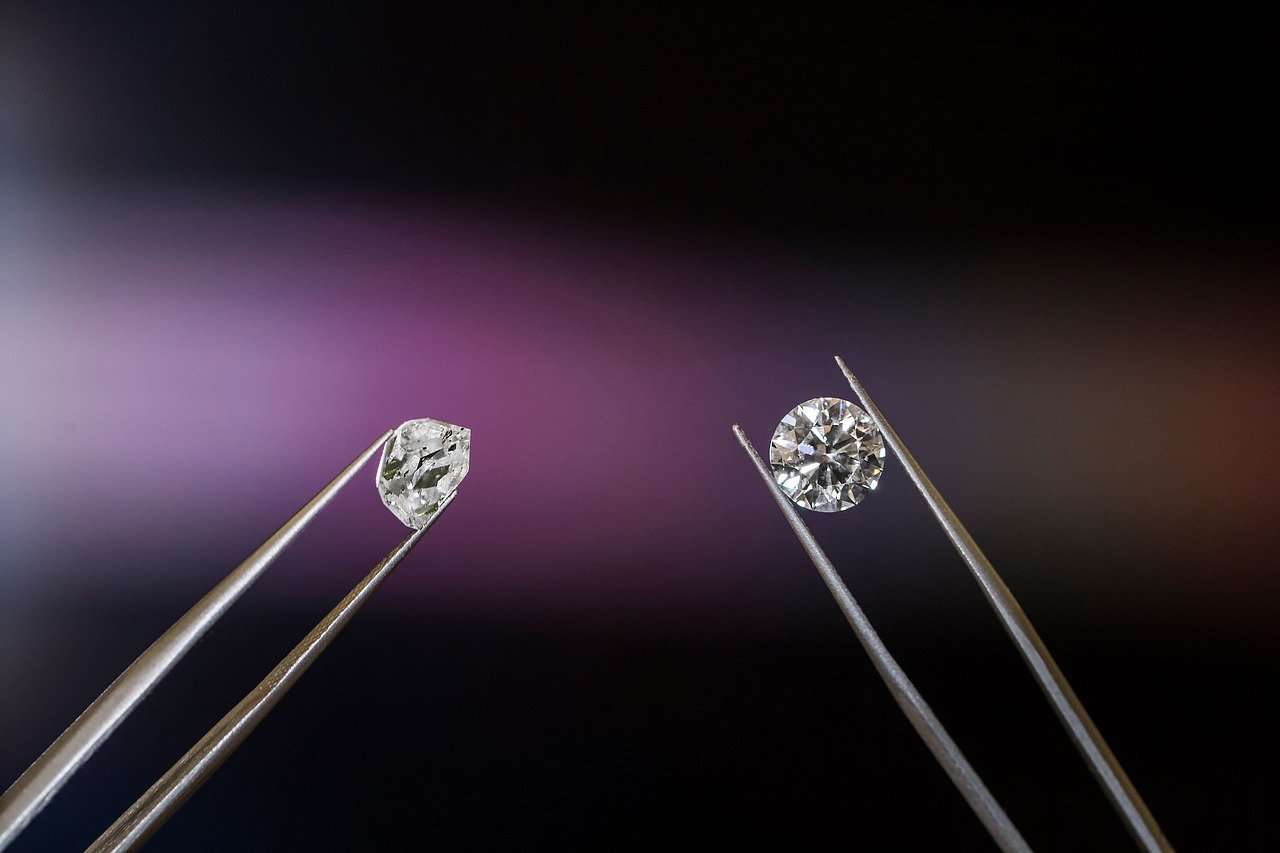Lab grown and created diamonds are becoming increasingly popular. With new technology and advanced processes, synthetic diamonds are identical to natural diamonds.
If you’re interested in learning about the composition process and apparent advantages of created diamonds, read this beginner’s guide to fully comprehend lab grown diamonds.
What are Lab Grown and Created Diamonds?
Lab grown and created diamonds are man-made diamonds produced in a controlled lab environment.
By simulating the natural process, scientists and jewelers have discovered how to create diamonds in a lab with the identical makeup of natural diamonds.
Created diamonds are a popular jewelry choice for earrings, necklaces, and engagement rings.
In this guide, we’ll break down the production process, the similarities to natural diamonds, and the specific diamond classifications and shapes of lab grown diamonds.
Production Process
Growing diamonds in a lab is accomplished through two different processes: High pressure, high temperature (HPHT) and chemical vapor disposition (CVD).
By starting with a seed or small diamond, both processes can curate beautiful and authentic diamonds.
The HPHT method applies substantial heat and pressure to grow diamonds, which is similar to the creation process for natural diamonds.
The CVD method involves adding heat and carbon rich gases to the diamond seed in a safe environment. Under low pressure, the gases are ionized into plasma and the molecules bond to the diamond in layers till the diamond is fully grown.
Manmade vs. Natural
Natural and man-made diamonds are practically identical.
Unless you’re a professionally trained diamond expert, it’s nearly impossible to tell the difference between natural and man-made diamonds.
Lab grown diamonds have the same chemical, physical, and visual components of natural diamonds. In fact, the only difference is the diamonds creation process and point of origin.
Diamond Classifications and Shapes
Because lab grown and natural diamonds are essentially identical, they’re evaluated using the same grading scale.
Diamonds are judged based on certain classifications. The grading system measures certain diamond quality factors, such as cut, clarity, color, and carat.
Additionally, natural and man-made diamonds can be found and purchased in the same shapes. Whether you prefer a round, pear, or princess shape, you can freely choose between lab grown and naturally produced diamonds.
Advantages of Lab Grown And Created Diamonds
Lab grown and created diamonds offer a wide variety of advantages over naturally produced diamonds.
If you’re in the market for diamond jewelry, consider assessing the benefits of purchasing lab grown diamonds.
Advantages for choosing created diamonds include affordable prices, important characteristics, increased purity and quality, and an environmentally sustainable production process.
Affordable Prices
Lab grown diamonds are significantly cheaper than natural diamonds.
Because created diamonds are readily available due to technology, synthetic diamonds are sold at lower prices.
Generally, lab grown diamonds are 40% to 60% cheaper than natural diamonds, depending on the cut, clarity, color, and carat weight.
The affordable prices of lab grown diamonds make it an advantageous choice for your next diamond purchase.
Important Characteristics
As previously mentioned, natural and man-made diamonds are identical.
Unfortunately, man-made diamonds are generally assumed to lack important characteristics associated with quality natural diamonds; however, lab grown diamonds scientifically meet the same quality standards.
Synthetic diamonds possess necessary qualities of natural diamonds including:
- Chemical composition is carbon
- Similar cubic crystalline structures
- Measure 10 on the Hardness Scale
- Equal measurements of light dispersion
- Identical measures on the Refractive Index
Lab grown diamonds consistently measure up to the same standard of quality for natural diamonds.
Greater Purity and Overall Quality
Because created diamonds are created in controlled environments, the purity and quality of lab grown diamonds is typically greater.
Unlike mined diamonds, lab grown diamonds are not exposed to dirt, harsh conditions, strain, or potential defects.
By monitoring the growth process, lab grown diamonds are guaranteed to lack impurities, creating a more pure and beautiful diamond every time.
Environmentally Sustainable
Mining diamonds damages the earth substantially. Due to the enormous amount of fossil fuels and the dwindling supply, natural diamonds are no longer an environmentally friendly or sustainable choice.
Producing lab grown diamonds is accomplished without harming the environment. In addition, created diamonds can be continually produced without fear of running out.
Lab grown and created diamonds are an affordable, beautiful, and sustainable alternative to naturally mined diamonds.
By learning the overall creation process and identical chemical composition of created diamonds, you can easily understand why the synthetic diamond industry is growing and becoming the advantageous choice.

